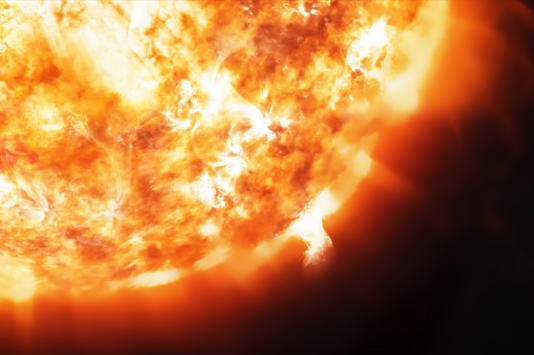Physicists at a European nuclear fusion lab have worked out a way to obtain more energy from fusion reactors than previously thought possible, surpassing a limit that existing reactors had been adhering to.

Stars use nuclear fusion to generate their energy.
Nuclear fusion is the process by which two atoms join together, producing a heavier element from two lighter ones. When this happens, energy is released.
Nuclear fusion happens all the time inside the sun, where hydrogen atoms combine under intense heat and pressure to form helium atoms. This releases even more energy which keeps the whole process going.
The idea of nuclear fusion power here on Earth is essentially to recreate this process, using the heat given off by the reaction to turn water into steam which can then power a turbine generator.
Recreating fusion on Earth has been one of the biggest challenges in modern science and promises a future of clean, easily sustainable power. Every so often scientists make little breakthroughs in research, though a reactor has yet to prove viable for electricity generation.
At the forefront of fusion research are machines called tokamaks, which heat hydrogen gas to extremely high temperatures to create a hydrogen plasma—a gas where electrons are stripped away from their atoms—in which fusion can occur.
The purpose of tokamaks is to keep this plasma flowing in a circle so that the fusion reaction can keep going. Two other things also need to be carefully controlled: temperature and the density of the fuel.
This week, scientists at the European research group École polytechnique fédérale de Lausanne (EPFL) in Switzerland have found a way to significantly increase the limits of this hydrogen fuel density—known as the Greenwald limit—beyond what was previously considered possible. It means that reactors should be able to produce even more energy.
“Since the early days of fusion, we’ve known that if you try to increase the fuel density, at some point there would be what we call a ‘disruption’—basically you totally lose the confinement [of the plasma], and plasma goes wherever,” said Paolo Ricci, a professor at the Swiss Plasma Center, in an EPFL press release. “So in the eighties, people were trying to come up with some kind of law that could predict the maximum density of hydrogen that you can put inside a tokamak.”
An EPFL team decided to revisit this limit, using supercomputers to model the fusion plasma. They found that the more fuel was added in, the cooler the plasma got. This meant the flow was more easily disrupted.
Using what they learned, Ricci and colleagues managed to work out a new equation for a new fuel limit inside a tokamak that was higher than before. Inside Europe’s ITER tokamak, the limit can actually be nearly doubled.
The step forward means it will be possible to add more fuel density without limiting the output, Ricci said, adding: “And that is very good news.”
Among those hoping for a nuclear fusion future is Microsoft co-founder Bill Gates, who was asked for his thoughts on the future of nuclear power in an Ask Me Anything (AMA) thread on Reddit on Wednesday.
He wrote: “There is nuclear fission. If it can solve the cost, safety and waste concerns it can make a massive contribution to solving climate change. I am biased because I have been investing over a billion in this starting over a decade ago.
“Also promising is nuclear fusion. It is less clear if we will succeed but it has less safety and waste issues if it works.
“So I am hopeful nuclear will improve and be a huge help for climate.”

